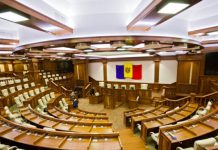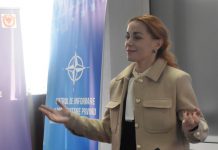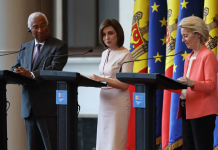The overload/reset” button was at least somewhat pressed during the Obama-Tandem summit earlier this month, between the American president and the twin rulers of Russia, Dmitry Medvedev and Vladimir Putin.
Scads of agreements were signed, mostly low-hanging fruit like the fly-over deal for Afghan resupply and promises to update the Gore-Chernomyrdin Commission, albeit at a lower, but perhaps more operational, level.
And there was important progress on the complex and laborious work of nuclear disarmament. On this highest-order, but fairly sanitary issue, Washington and Moscow love to agree because each country inevitably comes out looking good. Everyone is in favor of a safer planet, and in any event no healthy person on either side ever expects to use these weapons against the other.
Russia gets to remind the world (and itself) that it alone is on par with the United States in pure destructive power, a key psychological marker for those in the Kremlin. The U.S. will look to use the improved atmospherics with Russia for later progress on other key issues — Iran, North Korea, a Palestinian state, the next crisis. Even the daily Russian drumbeat of official anti-Americanism softened a little during the summit. These are all good things.
But, the show must go on, and so just days after the Obamas flew on to Italy and Ghana, Russian President Medvedev visited South Ossetia to a seemingly genuine heros welcome. In their condemnation of the visit, the Swedish EU presidency and the State Department rightly stuck up for territorial integrity and sovereignty, with the U.S. remarking how the Russian presidents support for separatism highlighted our fundamental differences in this regard.” One mans Russian-occupied Georgia” is of course anothers newest independent country in the world,” payback for Kosovo with all kinds of other nifty advantages for the home team.
Thus Vice President Biden, the original messenger of reset,” comes to Ukraine and Georgia at a critical time. He will give a boost to two democracies facing grave challenges of others and their own making. He will again renounce the fallacy that NATO’s gain is Russia’s loss, or that Russia’s strength is NATO’s weakness” while nonetheless holding the NATO door open if Ukraine and Georgia undertake tough economic, legal and institutional reforms. He will remind audiences that 19th century notions of spheres of influences and privileged space” have little place in the 21st.
But as we have seen, Russia went to war in part to circumvent any near-to-medium term hope of NATO entry for Georgia and surely would do the same in Ukraine were the country ready and the population willing to join the alliance. If Georgia and Ukraine will join NATO” someday, as the NATO declaration in Bucharest in April 2008 suggests, that someday is a long way away. Although the United States and Russia have essentially agreed to disagree on this issue, the Biden visit is designed to show Kiev and Tbilisi that Washington will not sacrifice their long-term democratic and institutional aspirations for the sake of less frosty great-power politics.
But while Ukraine and Georgia proceed on their vital path of reform, Russia and the United States, along with the EU, are missing out on a joint project that could apply the reset” approach to a sufficiently difficult, but solvable problem and continue the momentum of the Moscow summit: a resolution of the Transnistrian conflict with respect for the territorial integrity and sovereignty of the Republic of Moldova, but with a special status for the breakaway region.
If, as President Obama said in Moscow, the days when empires could treat sovereign states as pieces on a chess board are over” then Moldova offers an excellent opportunity for constructive multilateral action in the 5+2” format to rebuild the sovereignty and economy of an impoverished former Soviet republic. Perhaps having answered for Kosovo tit-for-double-tat with South Ossetia and Abkhazia, and facing what must seem like endless financial requests from a Transnistria on economic life-support (debts to Gazprom alone exceed $1.5 billion), the Kremlin could be ready, after years of blocking any hope for serious, good-faith negotiations, to move forward if skillfully prompted.
Having real, sustained, high-level talks on a concrete issue of disagreement where the outcome is uncertain and significant give-and-take is required would show the world that the U.S. and Russia can not only demonstrate flexibility and fortitude, but also get something positive done in a contentious area. And when was the last time a separatist conflict was resolved, with finality, at the negotiating table without a shot being fired?
Heres why the Nistru conflict is a great vehicle for this effort. First, the Republic of Moldova is constitutionally neutral. That means that both NATO and the continued Russian military and peacekeeping” presence are unwelcome. The supreme law of the land says that Moldova will not join NATO and every draft document ever prepared for conflict settlement contains a clause allowing Transnistria to secede if Moldova changes its status or loses its statehood. The Kremlins most neuralgic issue is already off the table.
Second, Moldovan society is extremely welcoming to Russian culture and Russian speakers. If 10 people gather in Moldova and one speaks only Russian and not Romanian, the other nine will switch to Russian to accommodate. There is no ethnic, religious or historical emnity here to disentangle. Each year that settlement is delayed, however, simple demographics will make it harder for the Russian minority to have as strong a say on such issues.
Third, Moldova is far away from Russia and has no common border. Russia scarcely needs a second Kaliningrad, resupplying the Kolbasna depot is already an issue, and if Ukraine continues along its path to deeper integration with the EU, the Kremlins advantages and assets in Transnisitra may be wasting ones due to simple geographic reality.
Fourth, if Moldova is the poorest country in Europe, Transnistria is then most likely the continents poorest region. For sure, the unresolved conflict keeps both economies down, but Moldova still has the advantages of being a recognized country, while Transnistria, which has some solid enterprises that could do better, remains hampered by its perception as a black hole for smuggling and contraband.
Fifth, but by no means last, the general contours of how settlement might look are well known thanks to years of work by the OSCE and the other mediators and observers. The former Transnistrian lead negotiator once quipped that he and his Moldovan counterpart could resolve all the outstanding issues in about a week if given the green light and sufficient political cover.
Certainly there are powerful forces that would retain the status quo at all costs, and they have shown their fangs on numerous occasions. But solving the Trasnsnistrian conflict together would provide the U.S. and Russia with the trust and mutual understanding needed to tackle the even harder issues ahead without resort to reflexive stereotypes and zero-sum thinking.
Louis ONeill was OSCE Ambassador and Head of Mission to Moldova from 2006 to 2008.






